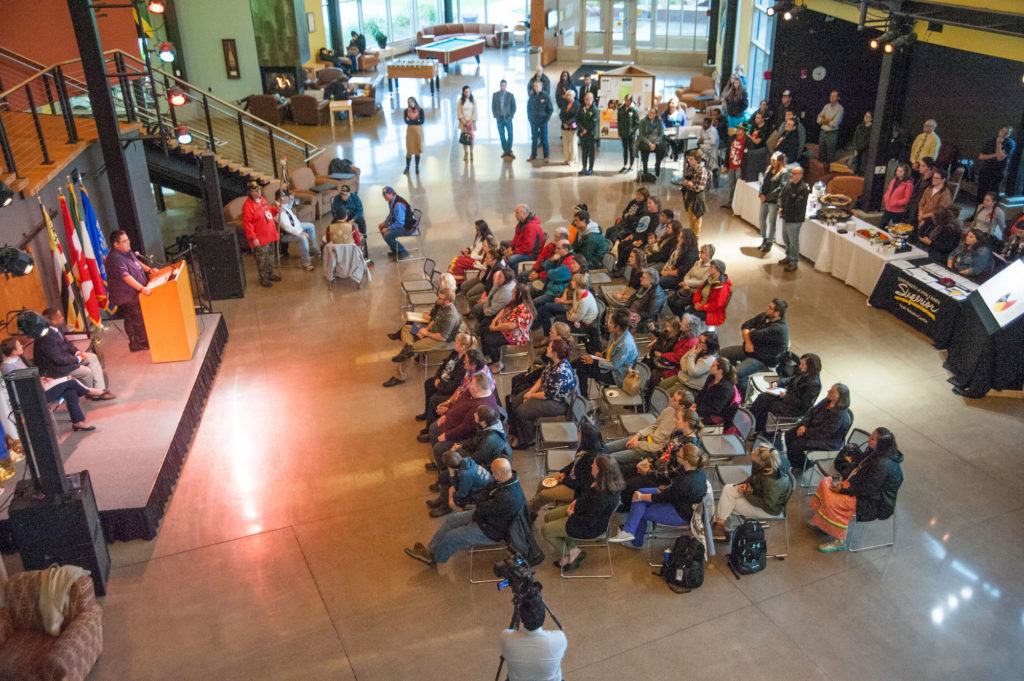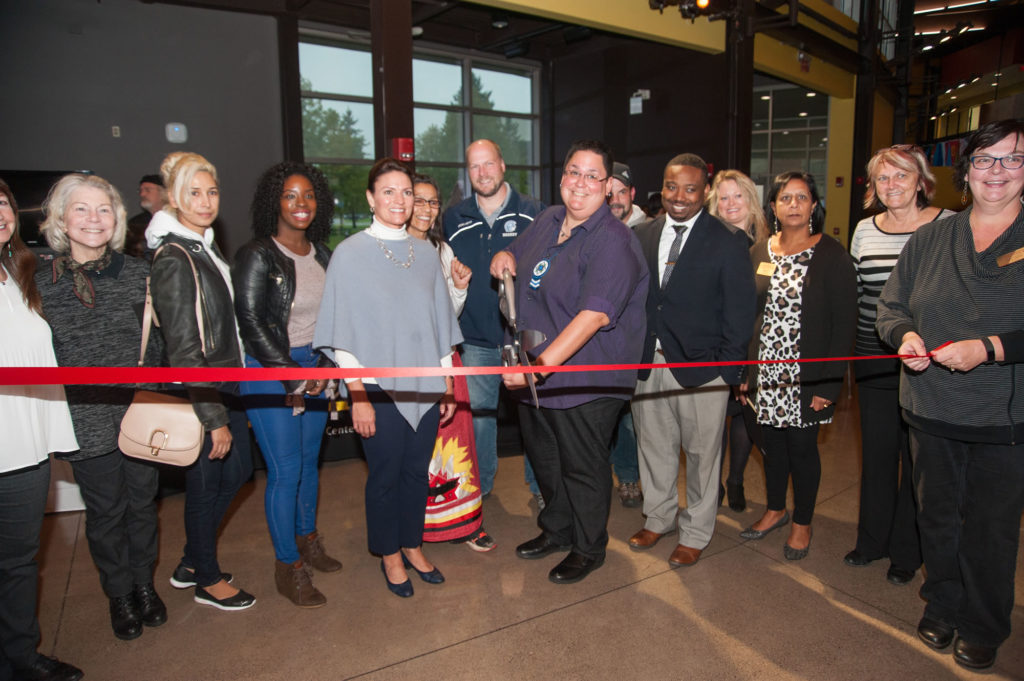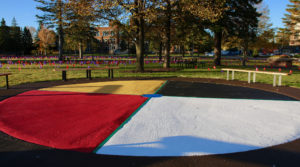
UW-Superior held a dedication ceremony on Indigenous People’s Day, Oct. 8, 2018, for the Maawanji’idiwin – “The Place Where We Come Together” Medicine Wheel and Community Gathering Area.
The University of Wisconsin-Superior (UWS) held a dedication ceremony on Indigenous People’s Day, Monday, Oct. 8, for the Maawanji’idiwin – “The Place Where We Come Together” Medicine Wheel and Community Gathering Area. The Medicine Wheel is located in the UWS courtyard near the Yellowjacket Union and is the first of its kind at any four-year college campus in the area.
More than 300 people attended the day’s events, which opened with the Buffalo Bay Singers drum group from Red Cliff, Wisc., and welcoming and recognition of representatives from area tribal communities, community leaders, and all in attendance. The event concluded with a ribbon-cutting ceremony.
UWS Chancellor Renée Wachter read a proclamation recognizing Monday, October 8 as Indigenous Peoples Day at UWS, “Celebrating not only indigenous diversity and resilience, but also the enormous contribution of First Nations people – past, present and future.”
Superior Mayor Jim Paine read a proclamation declaring October 8 Indigenous People’s Day in the City of Superior, and Senator Janet Bewley and Representative Nick Milroy read a state citation congratulating UWS.
Kat Werchouski, Assistant Director of Equity, Diversity and Inclusion welcomed attendees at the event, saying, “Boozhoo nindinawemaaginadoog! Hello and welcome all my relatives. Today is a good day. We have named the Medicine Wheel and Community Gathering Area the Maawanji’idiwin- ‘The Place Where We Come Together’- because it is a place for everyone and a place we can come together to learn and be united as people. The colors of the medicine wheel represent the human races, among many other things. We are connected on this wheel together.”
The Equity, Diversity and Inclusion department warmly recognized and thanked Ken Rodenwald, a carpenter in the UWS Facilities Management Department, who went ‘above and beyond’ to aid in the design and construction of the Medicine Wheel.

Participants gather for the ribbon cutting during the dedication ceremony UW-Superior held on Indigenous People’s Day, Monday, Oct. 8, for the Maawanji’idiwin – “The Place Where We Come Together” Medicine Wheel and Community Gathering Area.
Following the ceremony, there was a free educational program presented by Woodland Sky Native American Dance Company in Thorpe Langley Auditorium located in Old Main.
“We created the Medicine Wheel – a sacred Native American symbol – not only to pay honor to the Ojibwe people, whose land UWS inhabits, but also to provide a cultural and educational gathering space for all,” said Kat Werchouski, assistant director for Equity, Diversity and Inclusion and member of the project design team. “The project has brought together a variety of crucial voices and allies across the campus and is a perfect example of the university’s commitment to diversity and inclusion.”
Benches and educational signage have been placed around the Medicine Wheel and the existing Spirit Pole, which is adjacent to it, to create an inviting space for people to just sit and reflect, find healing and guidance, or practice traditional ways of prayer and offering.

